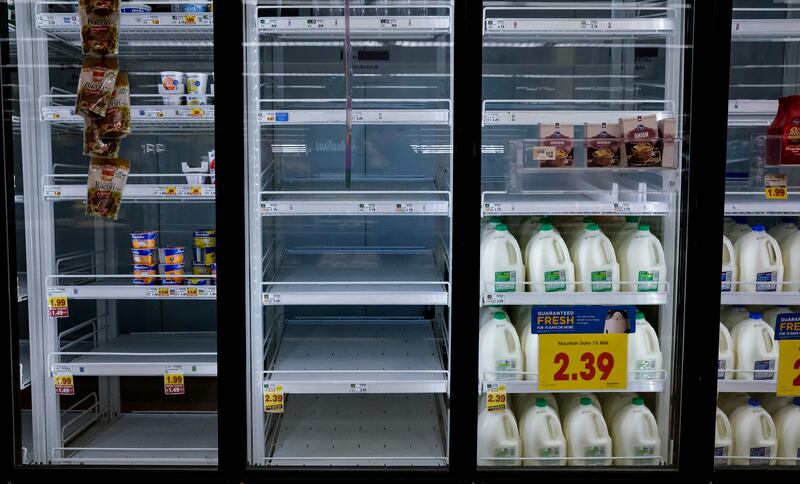In late March, when the Javits Center in New York was converted into a hospital, I became obsessed with protecting my parents from the coronavirus. I didn’t want my 86-year-old mother to die on a cot in a convention center. Then images of farmers ploughing their crops under gave me a new goal: to make sure my mom, who experienced chronic hunger as a child in postwar Europe, doesn’t go to bed hungry in her old age, too.
COVID-19 is putting a tremendous strain on our food system. Part of the problem has to do with distribution processes. Food intended to be sold to restaurants can’t easily be repackaged for consumers and rerouted to stores. The pandemic is also wreaking havoc with global transportation systems. And the labor supply is an issue, as some workers stay home, either because they’re sick or because they’re worried about the virus — or, in the case of migrant workers, about the Trump administration’s hostile policies toward immigrants.
Most Americans find it hard to imagine what a broken supply chain looks like. While living in Russia in the early 1990s, I visited a supermarket where signs showed different types of food — bread, fish, poultry, vegetables, and so on — but in every section, the shelves were completely empty. In the center of the store were a pile of toilet paper and a pile of powdered baby food.
I don’t think we’re heading toward that exact scenario. But we’re beginning to see rationing, and that’s likely to increase, especially if farmers let their fields go fallow because they don’t have a reliable labor force or a readily accessible market for their products.
My mom has vivid memories of the rationing that happened in East Germany after WWII. Often, people couldn’t buy staples like flour or butter even with the right ration cards, because those items simply weren’t available. My grandmother would take the train to the countryside and go from farm to farm, begging for half-rotten potatoes to feed her children.
All of Europe experienced three lean postwar years, until the United States intervened in 1948 with $15 billion in Marshall Plan aid. Although the United States offered aid to the countries of Eastern Europe, Stalin wouldn’t let them accept it. In particular, he said he didn’t care if the Germans starved. The Soviet Union had already looted the resources of its vassal states, and Stalin’s spiteful response to U.S. aid made my mom’s childhood even more difficult.
Someone once asked my mom’s twin sister, “When do you remember not being hungry?” My Aunt Helga thought for a minute and then said, “About 1950.”
Unfortunately, no one is coming to rescue us from the pandemic or its economic effects. Donald Trump didn’t create the problems with our supply chain, but his narcissistic approach to the COVID-19 crisis — manifest in his boastful and incoherent press briefings — isn’t helping. His spiteful attitude toward immigrants, which ignores the reality of how food gets from American fields to American kitchens, isn’t helping either.
What’s needed now are bipartisan solutions and creative partnerships between government and business. Last week I was happy to see that Sens. Mike Lee, R-Utah, and Amy Klobuchar, D-Minn., sent a joint letter to top Trump administration officials asking for an investigation into food supply chain problems.
To be honest, I know my parents won’t go hungry because they’ve had a year’s supply of wheat stored in their basement since I was a child. Five weeks ago, we made a pact that we wouldn’t go grocery shopping until the end of May, and two weeks ago my mom ran out of flour. After preparing for an emergency for decades, she may have been secretly gratified to finally have a reason to bust out the wheat grinder and mill her own flour.
Most Americans are much less prepared to deal with an erratic food supply. Many were barely hanging on before the crisis, and millions of families are now sliding into poverty because of it. And if we can’t fix our cracking supply chain, regular middle-class Americans who still have jobs may have to adapt their eating habits — formed in an era of abundance — to an era of scarcity.
Stefanie Condie is a marketing consultant and writer living in Salt Lake City. She is a member of Mormon Women for Ethical Government. The opinions expressed in this piece are the author’s own and are not meant to represent the views of MWEG.

